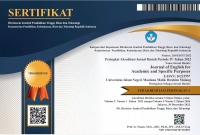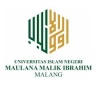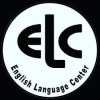- Focus and Scope
- Section Policies
- Peer Review Process
- Open Access Policy
- Archiving
- Author fee
- Plagiarism Policy
Focus and Scope
Journal of English for Academic and Specific Purposes (JEASP) a specialized journal of English language teaching (ELT) that meticulously tailors English language teaching-learning instructions to meet the precise needs of learners within various academic and professional fields. At its core, this journal focuses on English for Academic Purposes (EAP) in large classes, emphasizing the enhancement of essential language skills—listening, reading, speaking, and writing—alongside the critical components of grammar and vocabulary. This targeted approach necessitates the development of specialized teaching language materials, strategies, and assessment that address the unique linguistic demands of each discipline. The scope of this journal (JEASP) is vast and diverse, encompassing English for Education, which equips educators and students with the language proficiency required for academic success; English for Laws, covering the specialized terminologies of family law, economic law, criminal law, and constitutional law; and English for Science and Technology, focusing on the linguistic needs of natural sciences and engineering. Additionally, this journal extends to English for Economics, addressing the specific language of finance, banking, and business; English for Humanities, which enhances communication in social and cultural studies, languages, and media; and English for Medicine and Health Community Services, supporting the complex language requirements of medicine, pharmacy, nursing, midwifery, and health analyses. By concentrating on these focused and scoped areas, this journal (JEASP) ensures that authors/readers are well-prepared to effectively navigate and excel in their respective academic and professional environments.
Section Policies
Articles
Peer Review Process
Every manuscript submitted to this journal must align with its focus, scope, and author guidelines. Submissions should demonstrate scientific merit or present novel insights relevant to the journal’s objectives. To uphold academic integrity, all manuscripts must be free from plagiarism. Selected manuscripts undergo a rigorous double-blind peer review, evaluated by at least two expert reviewers. These reviewers provide constructive feedback to enhance the manuscript's quality and scientific contribution. The final decision on acceptance is determined by the Editors, based on reviewer evaluations. The Editor-in-Chief oversees the publication process, ensuring that accepted articles are scheduled for publication based on their acceptance date, thematic relevance, and the geographical diversity of the authors.
Open Access Policy
This journal provides an immediate open access to its content on the principle that making research freely available to the public supports a greater global exchange of knowledge.
Archiving
This journal utilizes the LOCKSS system to create a distributed archiving system among participating libraries and permits those libraries to create permanent archives of the journal for purposes of preservation and restoration.
Author fee
Journal of English for Academic and Specific Purposes (JEASP) does not charge. There are no article processing charges (without any APCs).
Plagiarism Policy
The Editorial Board of the Journal of English for Academic and Specific Purposes (JEASP) strictly prohibits plagiarism and has established a clear policy outlining actions and penalties for any detected instances of plagiarism or similarities in submitted articles. To ensure originality, we utilize Google Scholar and Turnitin for plagiarism detection before making a decision on manuscript acceptance.
Prior to sending manuscripts for peer review, the editorial team first verifies whether the submission has been previously published in other sources. The similarity check is then conducted using plagiarism detection tools. Submissions to theJournal of English for Academic and Specific Purposes (JEASP) must not exceed a similarity index of 20 %. If a manuscript surpasses this threshold, it will be returned to the author for revision and resubmission.
Definition of Plagiarism
Plagiarism is defined as the unauthorized use or close imitation of another author's language, ideas, or concepts and presenting them as original work.
Plagiarism Policy Guidelines
All submitted manuscripts must be original, unpublished, and not under consideration for publication elsewhere. Any content copied verbatim from another source must be clearly distinguished from the author's original work by:
- Indenting the text,
- Using quotation marks, and
- Citing the original source properly.
Any textual content that exceeds fair use standards (defined as more than two or three consecutive sentences) or any graphical content taken from another source requires explicit permission from the copyright holder and, where feasible, acknowledgment of the original author(s) and the prior publication.
Actions Taken in Cases of Plagiarism
If plagiarism is identified, the Editor-in-Chief, in consultation with the editorial team, will take appropriate action based on the severity of plagiarism, following these guidelines:
1. Minor Plagiarism
- Involves copying a small sentence or short paragraph from another source without significantly using data or ideas from the original publication.
Action: A formal warning is issued, and the authors are required to revise the manuscript and properly cite the original sources.
2. Intermediate Plagiarism
- Involves copying a significant portion of text, data, or key information without providing proper citation to the original work.
Action: The submitted manuscript is immediately rejected.
3. Severe Plagiarism
- Occurs when a substantial portion of the manuscript is plagiarized, including the reproduction of original data, equations, formulations, statements, or methodologies from other sources.
Action: The manuscript is automatically rejected, and the author(s) are permanently banned from submitting future articles to the journal.


















